Pansies are beautiful sun-loving plants that grow best when they receive four to six hours of sun daily and cool weather during the nights. Spring and fall months are perfect for their growth. But can pansy survive the winter? Let’s find out.
In general, pansies are known for their remarkable ability to survive the freezing weather with temperatures down to single digits. Pansies go dormant during freezing winter, but they will bounce back when the mercury level rises. However, you need to ensure that you protect them from freezing.
It is a great idea to grow winter pansies. Winter pansies are usually grown as annuals in the cold seasons.
If you live in the southern areas of the United States, you can grow pansies throughout the winter by replacing them with the summer annuals. Winter pansies can survive even frost conditions.
Today, we will talk about growing pansies in winter, how they can survive through the winter and what protection you need to provide them with to keep them thriving.
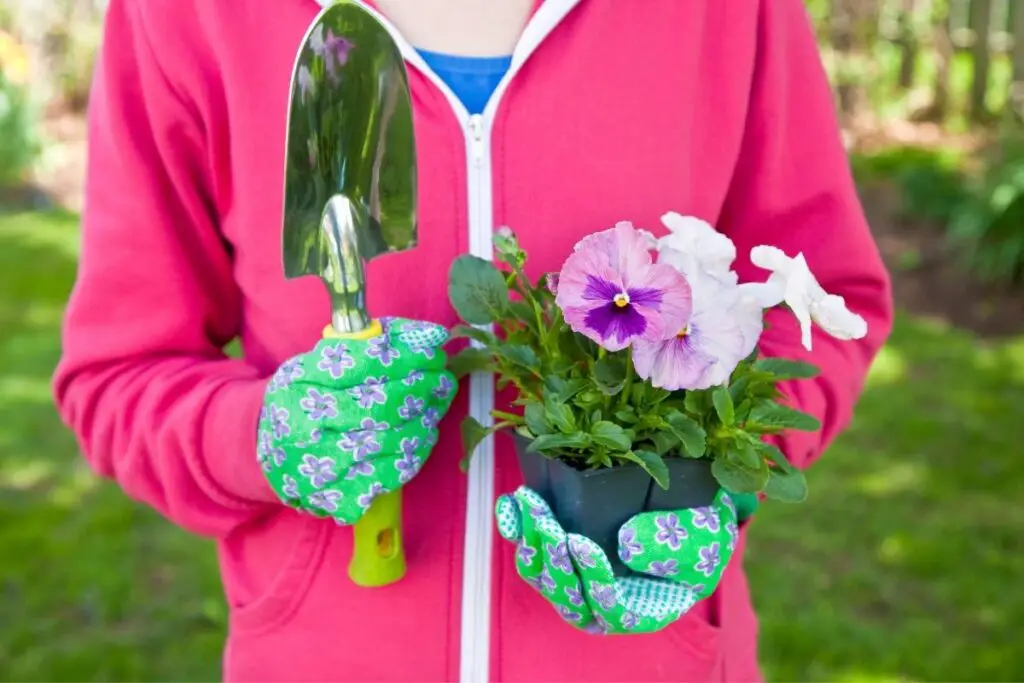
When is the growing season for pansies?
All the pansies are members of the Violaceae family. The viola tricolor and the hybrid V. x wittrockiana are the popular varieties among the pansies.
Usually, the pansies are planted in the soil bed in September or October in the zones of four to seven.
They will produce flowers for some months, and when the winter arrives, the flower production stops due to the low temperature. But the plant remains healthy and strong and keeps growing if they are provided with some special care during winter.
The pansies come back healthy after the winter goes away. They start growing fuller and fluffy flowers when the temperature rises and spring arrives.
If you live in zones eight to eleven, you can grow the pansies as annuals during the springtime. But, they will not thrive in the winters.
Because pansies are cool-weather and hardy plants that can survive winter in some areas, they are also called winter pansies. The winter pansies belong to the species of V.Heimalis.
Let’s find out how you can help your pansies survive the winters.
Can pansies survive winter?
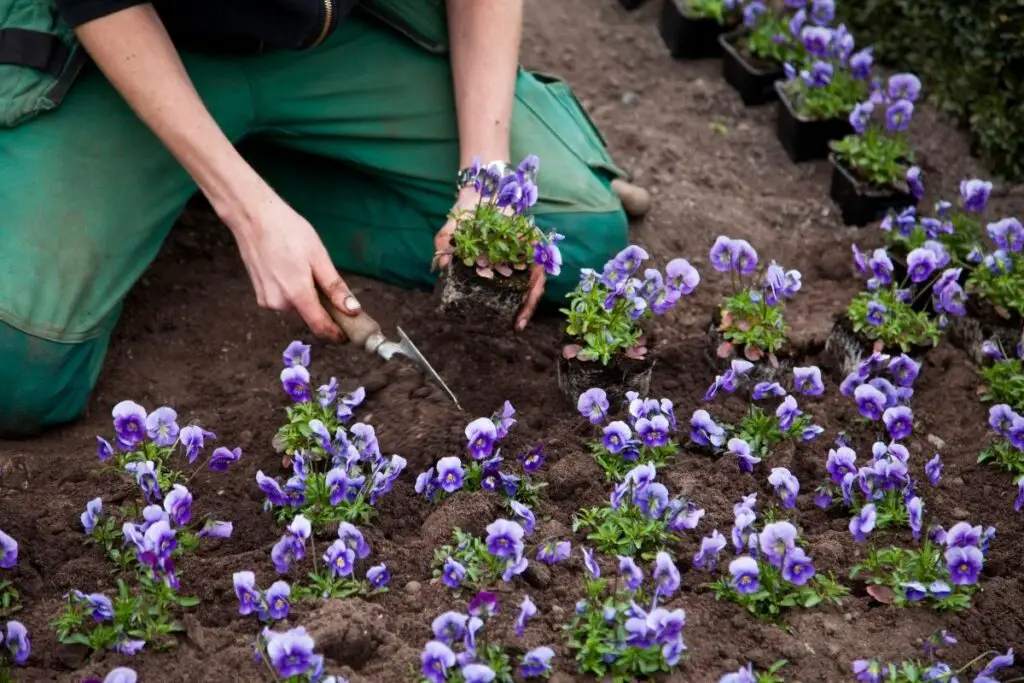
Pansies are beautiful plants that enjoy cool weather.
But many gardeners can get confused by whether they can survive the harsh winter season or not. The answer is yes. The pansies enjoy cool weather and can even survive frost to some extent.
Your pansies might or might not grow any flowers, but you can keep them alive and strong the whole winter season by taking good care and giving them protection from the excess cold. They will come back and start producing flowers once the temperature starts increasing.
Can you grow pansies during winter?
It entirely depends upon the climate whether you can grow pansies during the winter or not. Gardens in zones 7 to 9 will get a cold climate. As pansies can adjust to the cold temperatures, they will survive the winter.
Sometimes, in some areas, when the temperature decreases to -4°C, the flowers and the leaves of the pansy plant start wilting, and they do not last long.
But if the temperature doesn’t remain low for a long time, your pansies will become healthy again. They will probably start producing flowers once the temperature increases.
Winter pansies are usually grown as annuals during the cold climate as heat can be a big problem.
In the southern areas, they grow throughout the winter as annuals, changing with the summer pansies. In the northern areas, they are grown during the early spring or early fall.
If you grow pansies in rich humus soil, they behave as perennials and last for several years.
Also read: How Much Cold Can Pansies Tolerate? (+Winter Care)
Looking for gardening supplies? We have tested 100's of products before recommending them to you guys. Check out our best pick below:
| Image | Gardening Supplies | Best Price? |
|---|---|---|
 Top
Top Top
Top | Raised Garden Bed Kit | Check On Amazon |
 | XLUX Soil Moisture Meter, Plant Water Monitor, Soil Hygrometer Sensor for Gardening, Farming, Indoor and Outdoor Plants, No Batteries Required | No Results |
 Top
Top Top
Top | 82 Pcs Garden Tools Set and Extra Succulent Tools Set | Check On Amazon |
 | Joeys Garden Expandable Garden Hose with 8 Function Hose Nozzle, Lightweight Anti-Kink Flexible Garden Hoses, Extra Strength Fabric with Double Latex Core, (50 FT, Black) | No Results |
 Top
Top Top
Top | Dual Chamber Compost Tumbler | Check On Amazon |
 Top
Top Top
Top | Sunnyglade Plant Stakes | Check On Amazon |
 Top
Top Top
Top | Organic Cold Pressed Neem Seed Oil | Check On Amazon |
 Top
Top Top
Top | Mighty Mint Gallon :-Insect and Pest Control Peppermint Oil | Check On Amazon |
 Top
Top Top
Top | Scotts DiseaseEx Lawn Fungicide | Check On Amazon |
 Top
Top Top
Top | Jacks Classic 20-20-20 All Purpose Fertilizer | Check On Amazon |
 Top
Top Top
Top | 30,000 Seeds Pollinator Attracting Wildflower Mixture | Check On Amazon |
 Top
Top Top
Top | Survival Vegetable Seeds Garden Kit-Over 16,000 Seeds | Check On Amazon |
How to take care of pansies in the winters?
Pansies are very hardy plants that can survive winters if you give them extra attention and good care. You need to provide them with all the requirements in an adequate amount.
Light
Pansies are sun-loving plants. While planting them, make sure that the planting site can receive enough sunlight. This will help the plants to get the warmth of the sun and remain healthy.
If they are only experiencing low temperatures and no sunlight, your pansies won’t survive. Furthermore, the pansies will start going leggy because they will continuously stretch themselves towards the sun.
Leggy pansies need to be trimmed off, or else these will keep growing tall and eventually break from the middle of the stem and fall off.
So, to prevent such situations, make sure that your plant is receiving an adequate amount of sunlight all day.
Also read: How Much Sun Do Pansies Need? (Pansies Light Requirements)
Fertilizer
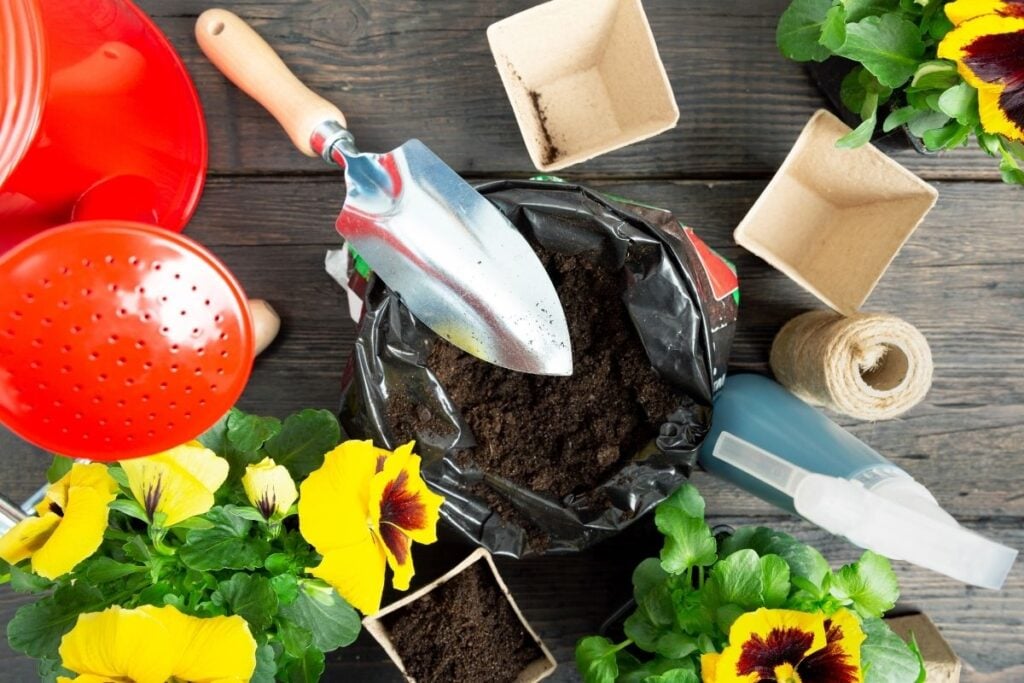
During the winters, pansies need extra fertilizer for the proper growth of the plant, leaves, and flowers. Avoid using granular fertilizers during this season.
Due to the dry winters and cold ground, the pansies might find it challenging to absorb the fertilizers as they become a bit stretchy due to the cold.
Liquid fertilizer will work well. It will be easy for the pansies to absorb the liquid fertilizers during such cold conditions.
Fertilizers will help them absorb more nutrients and keep them healthy and green throughout the winter. Your pansies will come back producing flowers when the temperature becomes ideal for them.
Use a balanced fertilizer (10-10-10) to get good results. Apply it every 2-3 weeks throughout the winter season.
Also read: Do Pansies Need Fertilizer? (What Type, How Much & More)
Deadheading
Remove all the spent flowers to stimulate the growth hormone in the pansies. This also makes the root system more robust.
Stimulating the growth hormone consistently and keeping the root system strong will help the pansies remain healthy and survive the entire winter. This will further promote the excellent survival of the plants.
Deadheading is an important task to keep your pansies healthy. If you prune all the dead and spent flowers from the plant, it will help the plant use more energy for producing flowers and keep them from making seeds.
Proper planting
If you want your pansies to remain alive and healthy, you need to plant them properly. Plant the pansies earlier in the autumn season. This will help the plant to get some time to give the root system a head start.
Avoid overcrowding of the pansies. Pansies can spread about ten to twelve inches.
Keeping a space of about ten inches will do well. Giving them enough space to grow will help them receive enough quantity of airflow for their optimal growth.
Your pansies will grow well if the soil temperature is about 7-12°C. If the soil temperature drops below 7°C, the plants become stunted, the leaves get pale, and flower growth is significantly less.
This happens because the root system is not matured. Thus, it gets strained due to the cold weather. It becomes difficult for the roots to absorb the nutrients from the soil.
The soil must have a sound drainage system. If not, then your plant would probably experience overwatering issues, which will result in leaf spots and edema.
Pansies do not like to be overwatered, especially if they are in freezing conditions. Excess water makes it impossible for the roots to draw water during the winter months.
To avoid such a situation, plant your pansies half an inch above the soil line so that the pansies don’t stand in pooled water and avoid the plant from sinking.
Mulch
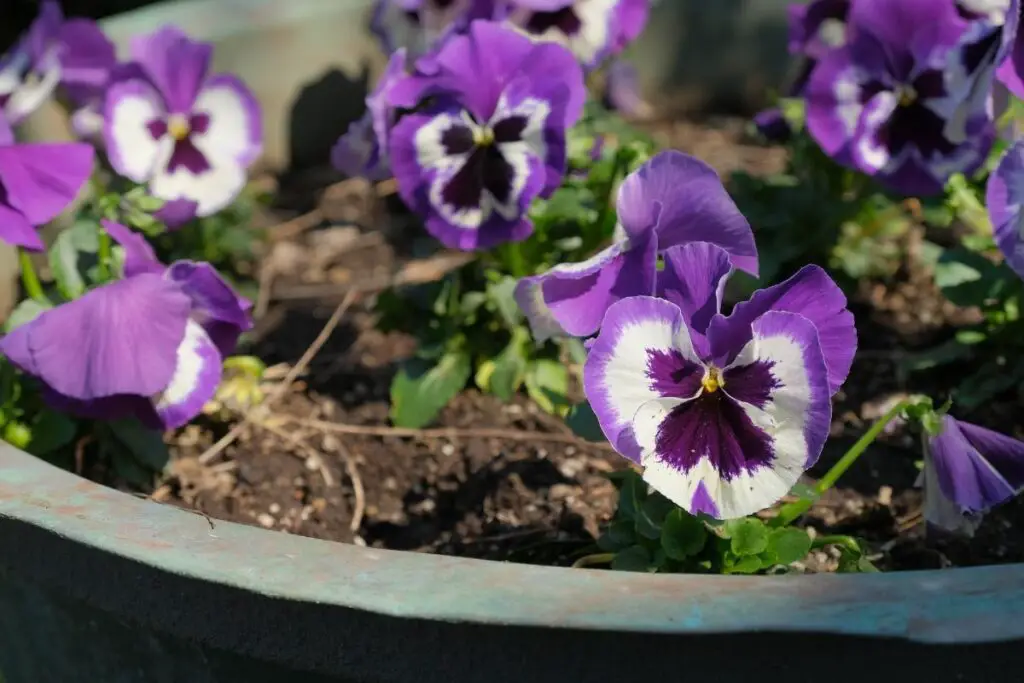
Adding mulch to the soil bed helps to retain the moisture. This also allows the plants to absorb the nutrients from the soil.
During the winters, the weather gets dry quickly, due to which the soil doesn’t remain moist. The stems and roots of the pansies become weak, and your plant might fail to come back healthy even when the temperature is suitable for its growth.
So, to keep your pansies alive throughout the winter so that they can come back healthy, you must add some mulch to your pansy soil bed.
Add one or two inches of mulch on the soil bed before planting the pansies. Try to avoid giving too much mulch that touches the main stems.
Adding excessive mulch will invite soil-borne diseases. At the same time, due to their capacity of holding moisture, excess mulch might result in overwatering. So be careful while adding mulch to the soil.
After adding the mulch during the planting time, again add the mulch when the frost starts arriving. Add the same amount of mulch as the first time, one inch or two inches. But, this time, you can cover the stems.
Water
Many gardeners might think that the weather is cold enough so the pansies will not require much water. But pansies need to be watered regularly.
When you are growing pansies, they are developing the root system and growing stems.
You need to give them water to keep them hydrated so that they remain healthy. This will also result in blooming until the temperature decline to 25°F or low.
The leaves might get wilted due to the cold weather, but they need to be hydrated regularly. This will also help them to receive the nutrients from the soil quickly and regularly.
If the soil gets dried up due to the dry weather conditions, give them one inch of water daily in the early morning and let them get the sunlight throughout the day.
Also read: How Much Water Does A Pansy Need? (Pansy Water Requirements)
Hardy pansy varieties for the winter season
If you want to keep your pansies alive throughout the winter, you should select the perfect variety before growing them in the winter.
Some varieties that survive winter well are:
- Accord series
- Bingo
- Crystal bowl
- Delta
- Icicle pansies
- Maxim
- Presto
- Sky
- Skyline
- Universal
Pansies can survive the winters and can give a grand comeback during the spring season. With the right management, proper care, and protection, your pansies will remain healthy and start to bloom during the spring.
Pansy cold protection
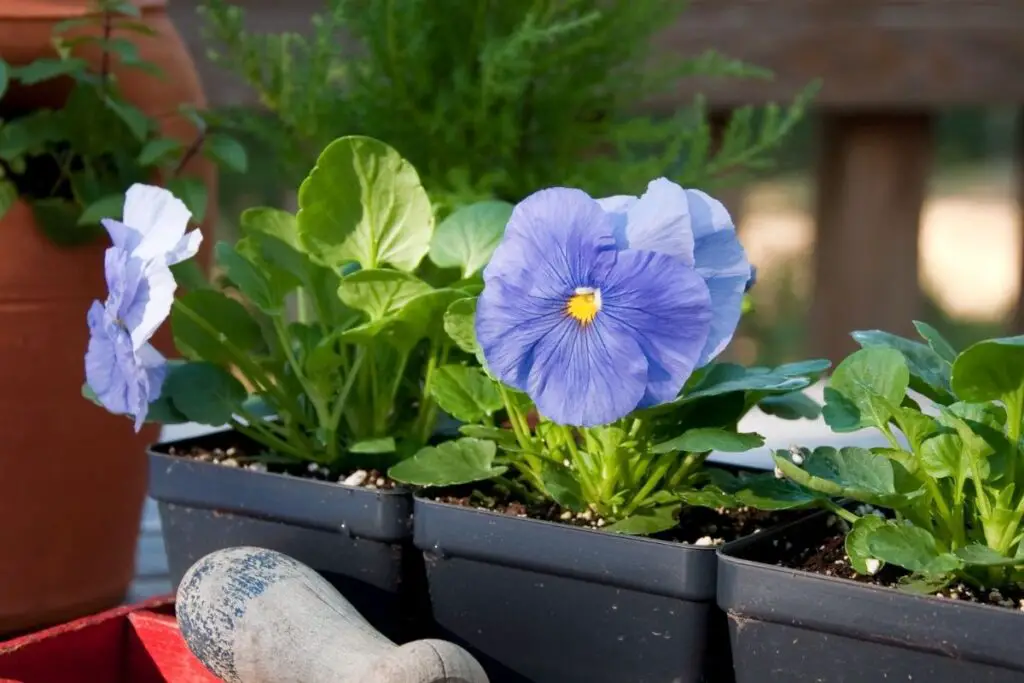
If the weather is too harsh, like -7°C for many days, you will need to protect your pansies to prevent them from freezing and dying.
To protect your pansies from freezing, make a pile of pine straw of about five centimeters and apply them over the soil bed. This will help trap and hold the warmth in the soil and minimize its exposure to cold weather.
Once the winter goes away, remove the pile of straw from the soil.
Other requirements
Along with all this care, you must also look after the basic needs of the pansies to keep them thriving:
- Plant them in the site where they can receive daily four to six hours of sunlight. They are sun-loving plants and enjoy being under the sun throughout the day in winter.
- Water them regularly or after every other day to keep them hydrated even in winter.
- Do not overwater your pansies. Give a break from the watering if you have overwatered them.
- Always remove the spent flowers from the plant to promote further flower growth.
- Plant above the soil line to prevent your pansies from standing on a pool or sinking into the water.
Final words
Pansies need extra care during the winter season. Taking proper care will keep the pansies healthy, and they can live throughout the winter and start blooming once the spring arrives.
It is better to wait for the ideal season when the pansies will grow well and produce flowers. But still, if you want your plants to grow during the winters, choose the winter pansies for better results.
Keep your plants hydrated so that they can remain strong and come back healthy during the springtime to start producing flowers.
If the temperatures go extremely low, add straw mulch to the pansy soil bed to reserve warmth for the pansies so that they don’t freeze and die.
Plant them in sites where they will receive six hours of sunlight daily.
Fertilize them once a month to provide them with the essential nutrients. Use liquid fertilizer for easy absorption.
Protect them from the harsh cold conditions and take proper care to help them survive the winters so that they can start producing flowers once the right season arrives.
Ref: The University of Arkansas, Britannica, Utah State University, Wikipedia, The University of Georgia, The Pennsylvania State University, The Royal Horticultural Society.
